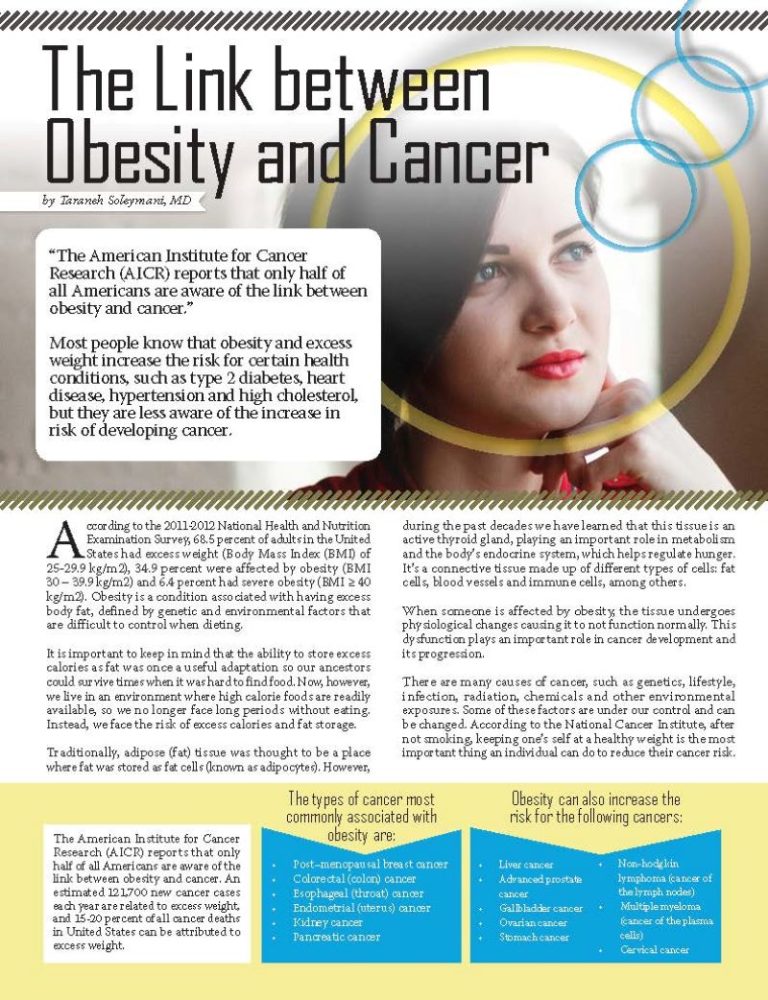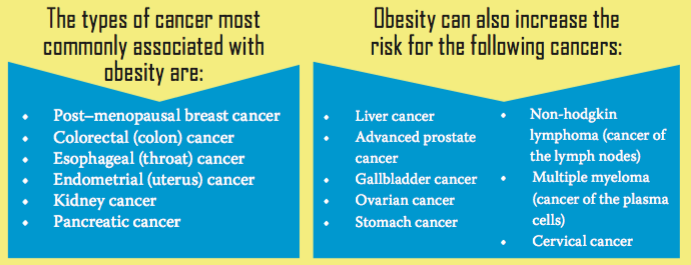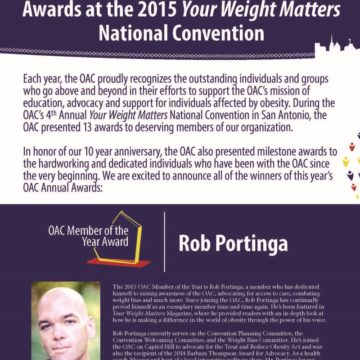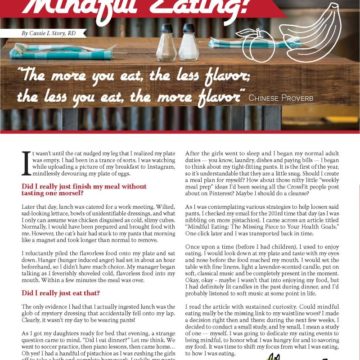The Link Between Obesity and Cancer


by Taraneh Soleymani, MD
Winter 2016
“The American Institute for Cancer Research (AICR) reports that only half of all Americans are aware of the link between obesity and cancer.”
Most people know that obesity and excess weight increase the risk for certain health conditions, such as type 2 diabetes, heart disease, hypertension and high cholesterol, but they are less aware of the increase in risk of developing cancer.
According to the 2011-2012 National Health and Nutrition Examination Survey, 68.5 percent of adults in the United States had excess weight (Body Mass Index (BMI) of 25-29.9 kg/m2), 34.9 percent were affected by obesity (BMI 30 – 39.9 kg/m2) and 6.4 percent had severe obesity (BMI ≥ 40 kg/m2). Obesity is a condition associated with having excess body fat, defined by genetic and environmental factors that are difficult to control when dieting.
It is important to keep in mind that the ability to store excess calories as fat was once a useful adaptation so our ancestors could survive times when it was hard to find food. Now, however, we live in an environment where high calorie foods are readily available, so we no longer face long periods without eating. Instead, we face the risk of excess calories and fat storage.
Traditionally, adipose (fat) tissue was thought to be a place where fat was stored as fat cells (known as adipocytes). However, during the past decades we have learned that this tissue is an active thyroid gland, playing an important role in metabolism and the body’s endocrine system, which helps regulate hunger. It’s a connective tissue made up of different types of cells: fat cells, blood vessels and immune cells, among others.
When someone is affected by obesity, the tissue undergoes physiological changes causing it to not function normally. This dysfunction plays an important role in cancer development and its progression.
There are many causes of cancer, such as genetics, lifestyle, infection, radiation, chemicals and other environmental exposures. Some of these factors are under our control and can be changed. According to the National Cancer Institute, after not smoking, keeping one’s self at a healthy weight is the most important thing an individual can do to reduce their cancer risk.
The American Institute for Cancer Research (AICR) reports that only half of all Americans are aware of the link between obesity and cancer. An estimated 121,700 new cancer cases each year are related to excess weight, and 15-20 percent of all cancer deaths in United States can be attributed to excess weight.

While the exact links between obesity and cancer are not fully known, research studies have proposed several possibilities:
- Cancer is a disease caused by uncontrolled growth of cells which can take place in any part of the body. Obesity is often associated with increased insulin (a hormone which regulates metabolism) and insulin-like growth factor-1 (a hormone which increases cell growth and slows cell death) levels in blood, and they can result in overstimulation of cells to grow and potential cancer cell development.
- Fat cells produce hormones that can stimulate or inhibit cell growth. There is an increase in fat cell size and quantity in individuals with obesity versus more lean individuals. In obesity, the fat cells produce more leptin, which stimulates cell growth, and less adiponectin that slows cell growth. Collectively, they increase the risk for cancer cell formation (for all cancer types).
- In obesity, there is an increase in the number of immune cells in the extra adipose tissue. These immune cells release inflammatory substances that can result in a chronic inflammatory state that is associated with increased cancer risk.
- After menopause, a woman’s ovaries stop producing estrogen, and the primary source of estrogen is the woman’s body fat. A woman with a higher body fat during the post- menopausal years would be expected to have a higher level of estrogen. Excess estrogen is associated with increased risk for post-menopausal breast cancer and uterus cancer.
The American Institute for Cancer research (AICR) reports that 38 percent of breast cancers, 50 percent of colon and rectal cancers, 69 percent of throat cancers, 24 percent of kidney cancers and 19 percent of pancreatic cancers can be prevented by maintaining a healthy weight, balanced diet and by increasing physical activity.
To educate the public on lifestyle changes that could decrease cancer risk, the AICR and World Cancer Research Fund have collaborated to publish a report titled: “Food, Nutrition, Physical Activity and Prevention of Cancer: a Global Perspective.” In this report, an expert panel of renowned scientists reviewed thousands of scientific studies and developed 10 recommendations for cancer prevention.
10 Recommendations for Cancer Prevention
1. Maintain a healthy weight and waist circumference
Aim for a healthy BMI between 18.5-25 kg/m2. The location where excess fat is stored in the body can influence cancer risk. Excess fat around the midsection, or “belly-fat,” increases the risk of certain cancers, such as colon, pancreas, uterus and post-menopausal breast cancer. It will also increase the risk for heart disease and type 2 diabetes. Waist circumference should not go above 35 inches in women and 40 inches in men.
2. Increase physical activity
We live in an environment where it has been made easy to follow a lifestyle with less movement: watching television, working on a computer, driving to work etc. Physical inactivity has multiple harmful effects. It increases the risk of colon and breast cancer, type 2 diabetes, heart attack, stroke and cognitive decline. Any amount of physical activity is better than none, so start slow, and build to a goal of 30 minutes of moderate physical activity (any exercise that increases your heart rate and makes you breath harder) every day. Physical activity also helps you maintain a healthy weight.
3. Avoid sugar-sweetened beverages and limit high calorie foods.
Juice with added sugar, soda and sweet tea are examples of sugar-sweetened beverages. They are easy to drink and make it easy to increase our total daily calorie intake. They have minimal to no nutritional value, high carbohydrate content and do not make us feel full. A healthy alternative is water or zero-calorie drinks like unsweetened tea.
Monitoring the calorie content of the food we eat can help us achieve and maintain a healthy weight. A calorie dense food has a high calorie content in every bite. These food items are generally processed and have more fat or refined carbohydrates and are low in fiber and water (i.e. French fries, pizza, cinnamon rolls).
4. Eat a plant-based diet
Eating a plant-based diet that includes fruit, vegetables, whole grains, nuts and legumes has several benefits. This diet has a higher content of fiber that is healthy for the intestines and improves its ability to digest the foods you eat. Fiber helps with weight management. A plant-based diet also provides vitamins and minerals in their natural form that are necessary for normal body functions, and the antioxidants (molecules that help delay and prevent cell damage) present in fruits and vegetables help protect the body cells from cancer-causing substances. The goal is to fill two-thirds of the plate with plant-based food items as often as possible.
5. Limit red meat and avoid processed meat as much as possible
There is a strong link between red meat (i.e. beef, lamb, pork) and colon and rectal cancers. The heme iron, which gives red meat its color, can damage the cells lining the colon. Eating up to 18 oz. of red meat per week is safe.
However for every 1.7 oz. above this limit, the risk of cancer will increase by 15 percent. Eighteen ounces of meat is a little more than one pound of meat you can eat safely per week, and meat is typically recommended to be served in a three ounce portion – about the size of a deck of playing cards.
Meat that has been preserved by salting, smoking or curing contains chemicals that can damage cells in the body. Any amount of processed meat will increase cancer risk.
6. Limit alcohol consumption
Studies have shown that alcohol can increase the risk of several cancers, such as mouth, throat, vocal chord, breast cancer and colon or rectal cancer in men. It is recommended that alcohol be limited to one drink for women and two drinks for men per day.
How much is one drink?
- 12 oz. of beer (1 regular sized can) (5 percent alcohol content)
- 5 oz. of wine (about 1⁄4 of a large glass and 1⁄2 of a smaller glass) (12 percent alcohol content)
- 1.5 oz. (1 shot glass) of 80-proof liquor such as vodka (40 percent alcohol content)
Both the American Heart Association and AICR do not recommend individuals who do not drink alcohol to start drinking. Limiting alcohol intake can also help with weight management.
7. Limit salt consumption
High salt consumption has been associated with increased risk for stomach and throat cancer as it can damage their lining. Processed meat has a high content of salt, especially when it is salt-cured or salt-pickled. Other processed food such as cereal, pizza, chips, canned soups, frozen meals and flavored noodles can increase salt intake above the recommended 2400 mg per day (about 1 teaspoon).
How much salt is enough?
Dietary Guidelines for Americans for a Healthier Life 2010:
- Reduce intake to less than 2300 mg per day, and
- Further reduce intake to 1500 mg per day for Adults ages 51+, African Americans ages 2+ and people ages 2+ with high blood pressure, diabetes or chronic kidney disease.
8. Avoid using supplements in place of natural nutrients
Supplements should not be used to protect against cancer. It is best to get the nutrients we need from our diet in their natural form. Also it is important to keep in mind that very high doses of vitamin and mineral supplements has been associated with increased cancer risk. Supplements are recommended for the following groups: women of childbearing age, pregnant and nursing women, children between the ages of 6 months and 5-years-old, seniors and bariatric patients.
9. Breast-feeding can help new mothers
It is recommended that mothers breast-feed exclusively for 6 months and then add other liquid and food to their baby’s diet. Breast-feeding is good for the mother and the baby. It protects the mother against breast cancer by reducing the cancer producing hormones in the body, and it protects the child from becoming affected by excess weight or obesity.
10. Cancer survivors should follow all guidelines
AICR recommends that cancer patients follow the nine cancer prevention strategies stated in this article.
Conclusion
Our overall cancer risk is affected by our lifestyle over the span of our life. It is never too early or late to start cancer prevention, and most importantly, making small every day changes that are sustainable today can help lower the cancer risk throughout our lifetime.
About the Author:
Taraneh Soleymani, MD, is an assistant professor in the Department of Nutrition Sciences and Medicine at the University of Alabama at Birmingham (UAB), and the medical director of EatRight by UAB, a comprehensive weight management program. Dr. Soleymani is also the co-director of UAB’s Weight-loss Medicine Center, and the director of nutrition consultation services at Birmingham VA Medical Center. She is board certified in internal medicine with fellowship training in clinical nutrition and obesity management, and her clinical expertise includes patient tailored comprehensive medical management of obesity and inpatient nutrition management for the critically ill.
by Sarah Muntel, RD Spring 2024 Spring has sprung, bringing sunnier and warmer days! For many, this…
Read Articleby Yelena Kibasova Spring 2024 The fitness world is evolving, with new trends and innovations that promise…
Read Articleby Zack Lucks, NASM-CPT, EMT Winter 2024 Working out with a loved one is a great way…
Read Article








